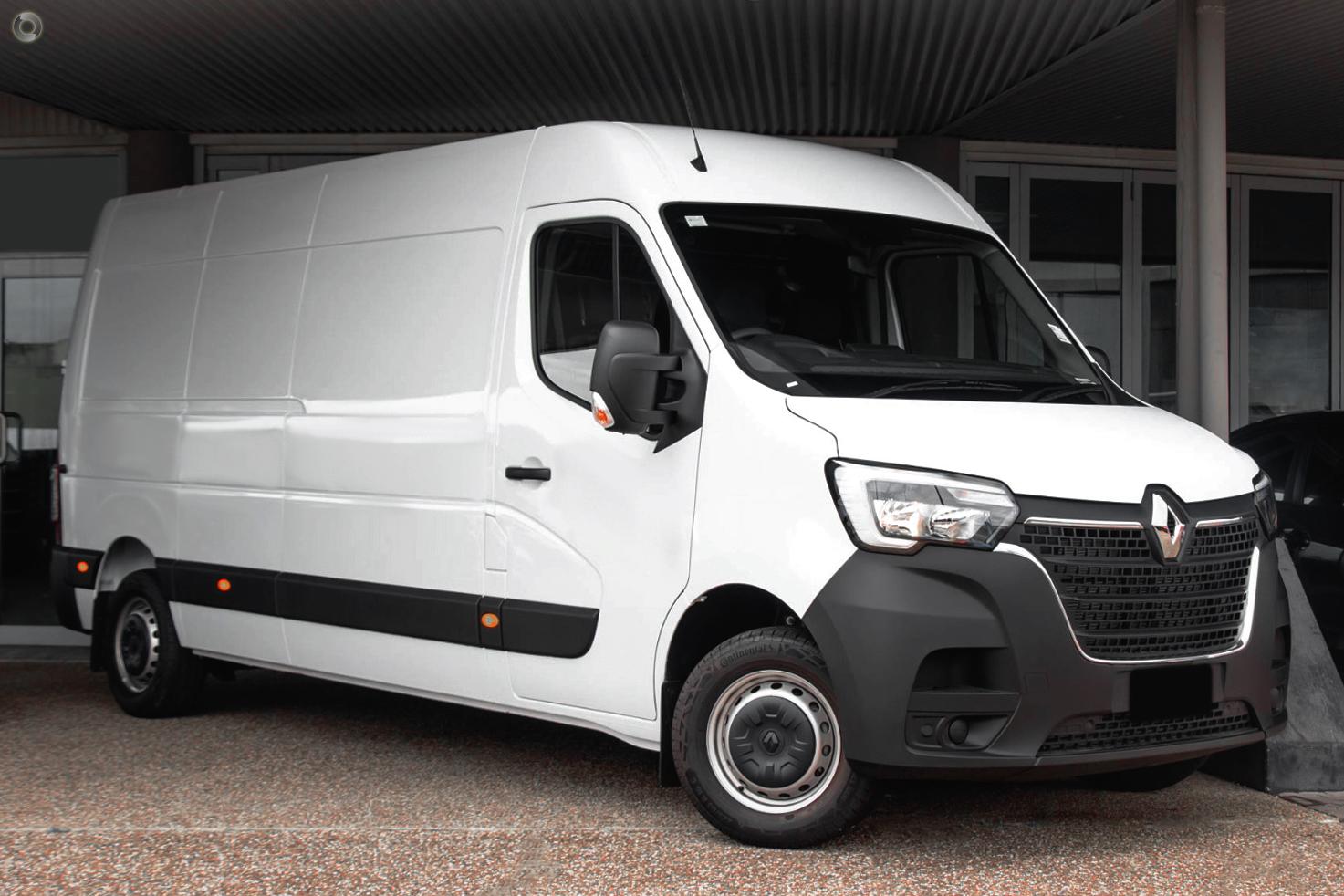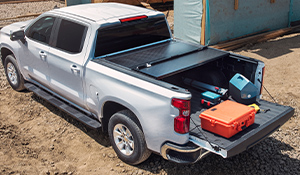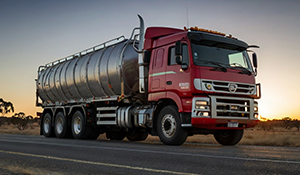Iveco S-Way prime mover


Iveco has launched a new prime mover that they’re calling their most driver-centric long-haul truck – the S-Way.
Unveiled at a dealer and press convention in Spain this past July, the S-Way is a new model in the Iveco Way heavy-duty range and marks what Iveco’s parent company CNH Industrial calls an important milestone for the company.
“Within CNH Industrial, Iveco is part of something bigger and uses the synergies within the Group,” said CNH Industrial CEO, Hubertus Mühlhäuser. “This new flagship Heavy Duty Truck is not only an achievement for the Iveco brand, it is also an important milestone for CNH Industrial as a whole.”


Integrated, Economical, Innovative
Iveco says the S-Way marks a strong shift toward providing operators with an “integrated transport solution” that’s also economically and environmentally sustainable.
The new truck will be “tailored around a driver’s life” by being easy to work with and making the job of a long-haul driver more attractive and enjoyable.
Part of making that job easier starts with a ground-up redesign of the cabin and building upon advances developed and tested on previous generations of Iveco prime movers, like the optimised driveline introduced in 2016.
Combining style with practicality, the new S-Way cabin was designed to optimise aerodynamic performance: no easy task for any cabover truck. However, Iveco have made some genuine gains, with the new design said to reduce the drag coefficient by up to 12 per cent and increase fuel efficiency by up to 4 per cent compared to previous Iveco prime mover cabins.
Increasing the S-Way’s aerodynamic efficiency are things like the integrated flat roof, a fully-retractable front step, a new bumper with integrated air deflectors, new wheelarch openings and even the incorporation of deflectors and radiused corners on the new model’s distinctive grille.
A much longer door contributes, too, extending down to the second step and forming part of the wheelarch, while an integrated parking cooler for in-cabin climate control when stationary is said to have no impact on aerodynamic performance.
An optional aero kit, made up of side skirts and rubber extensions, improves this efficiency even further by closing the gap between the prime mover and the trailer.
A clever part of the cabin design is the front bumper. Aimed at reducing operators’ Total Cost of Ownership (TCO), the bumper is made up of multiple pieces, so in the event of a minor accident, only the affected piece needs to be replaced, instead of the whole bumper.
Speaking of accidents, the S-Way cabin has been designed with safety at the forefront. The reinforced cabin is compliant with European ECE R29.03 crash standards, while elements aimed at avoiding the need to test the cab’s durability include one-piece side-windows and improved mirrors for better vision, and a modified front axle that can reduce braking distance by 15 per cent.
A full LED lighting package throws a sharper beam further ahead, improving forward visibility by a claimed 15 per cent, while Iveco’s Advanced Driver Safety Systems are part of the S-Way’s standard specifications.
Unrelated to the cabin design, emissions are down on the S-Way, thanks mostly to the integration of an exclusive HI-SCR after-treatment exhaust system. This is additional to the existing Smart EGR and improvements in engine and transmission technology applied to recent Iveco prime movers.


Designed around the Driver
Inside the S-Way cabin, the redesign has been just as extensive as what’s gone on outside. However, with no images of the cabin’s interior released at time of writing, we’ll have to take Iveco’s word that it’s as good as they say it is!
Iveco says the redesign provides first rate living, working and driving conditions, offering both abundant space and outstanding ergonomics.
Starting with the driver’s seat, the base was lowered to increase cushion thickness for comfort and add more adjustability. Also aimed at accommodating drivers of different sizes is the new flat-bottomed steering wheel. A feature more commonly seen on sports cars; in this instance the wheel design accommodates drivers with a “fuller figure”!
Controls and switches have also been redesigned for maximum ergonomic efficiency, with no less than 22 of these to be found on the steering wheel.
The driver can engage most of the S-Way’s Assisted Driving Systems from the wheel, as well as the usual audio and phone controls, to minimise distractions and improve comfort.
Similar ergonomic and ease-of-use considerations went into the dashboard design, which includes a 7-inch central touchscreen for what Iveco calls a state-of-the-art infotainment system.
Smartphone mirroring is standard, as is Bluetooth, voice recognition, DAB digital radio, satellite navigation and even cybersecurity features. Breakdown and accident assistance services, as well as Iveco’s Driving Style Evaluation system, are incorporated into this package, too.
Reflecting passenger car design trends, there’s now an engine start-stop button, which along with the electronic key, is housed near the DNR transmission controls on the dash.


The air con system, including a parking cooler and heater, is said to provide the perfect in-cabin climate, whether on the road or parked up.
Alongside the driver, the centre console includes a shelf, bottle and cup holders, a drawer to accommodate A4-size folders, USB and 12V sockets, plus a backlight for night time use. A range of fridges and cool boxes are optional.
A fold-out table has been added to the passenger seat, with large door pockets made possible by the new door design.
For more storage space, the upper shelf can accommodate 250 litres, with optional externally-accessed boxes of 375-litre capacity able to be added to each side of the cabin.
Redesigning the cabin’s innards, specifically lowering the centre tunnel and reshaping the upper shelf, allows a 2.15mt standing height in the cabin, with usable space in the sleeper improved by 35cm compared to the current Iveco cabover.
On the 2-level bed set-up, a T-shaped lower bunk features a 14cm-think mattress and includes USB ports at each end, while the upper bunk has easy access to the truck’s heating, lighting and cabin locking functions. The upper bunk can also be had in two configurations: the 60cm-wide Smart Bunk with a foldable 8cm mattress; or the 70cm-wide Comfort Bunk that features a thicker 10cm mattress.
Like the outside, the interior lighting is all LED, including reading lights for driver and passenger, dimmable ceiling lights and “smart” activation of this lighting when the cabin doors are opened. This all-new lighting package is the result of what Iveco calls a comprehensive study of the interior lighting system.


100% Connected
Finally, Iveco’s press release information on the S-Way describes the new truck as their “most connected”, thanks to the incorporation of a new Connectivity Box they’re describing as a real game-changer.
With the ability to collect, process and exchange data in real time, the Connectivity Box works off a service platform developed in partnership with Microsoft.
Owners and drivers can be constantly connected to their vehicle through the MyIVECO portal and app, which has been designed to be easy to use and “enhance the driver’s life” behind the wheel.
This connectivity is said to make access to driver assistance and driving style features easier, while for logistics operators, this data helps streamline servicing and improve operational efficiency, thus maximising uptime and lowering TCO.
X Marks the Spot
While the S-Way has made its European debut, an Australian release for the new model is likely to be some time away, as the locally-built Stralis X-Way was only released here last November.
Additionally, the X-Way is arguably better suited to Australian conditions, particularly non-tarmac roads, as it was the result of four years’ local development between Iveco’s Australian office and the Italian HQ.
















